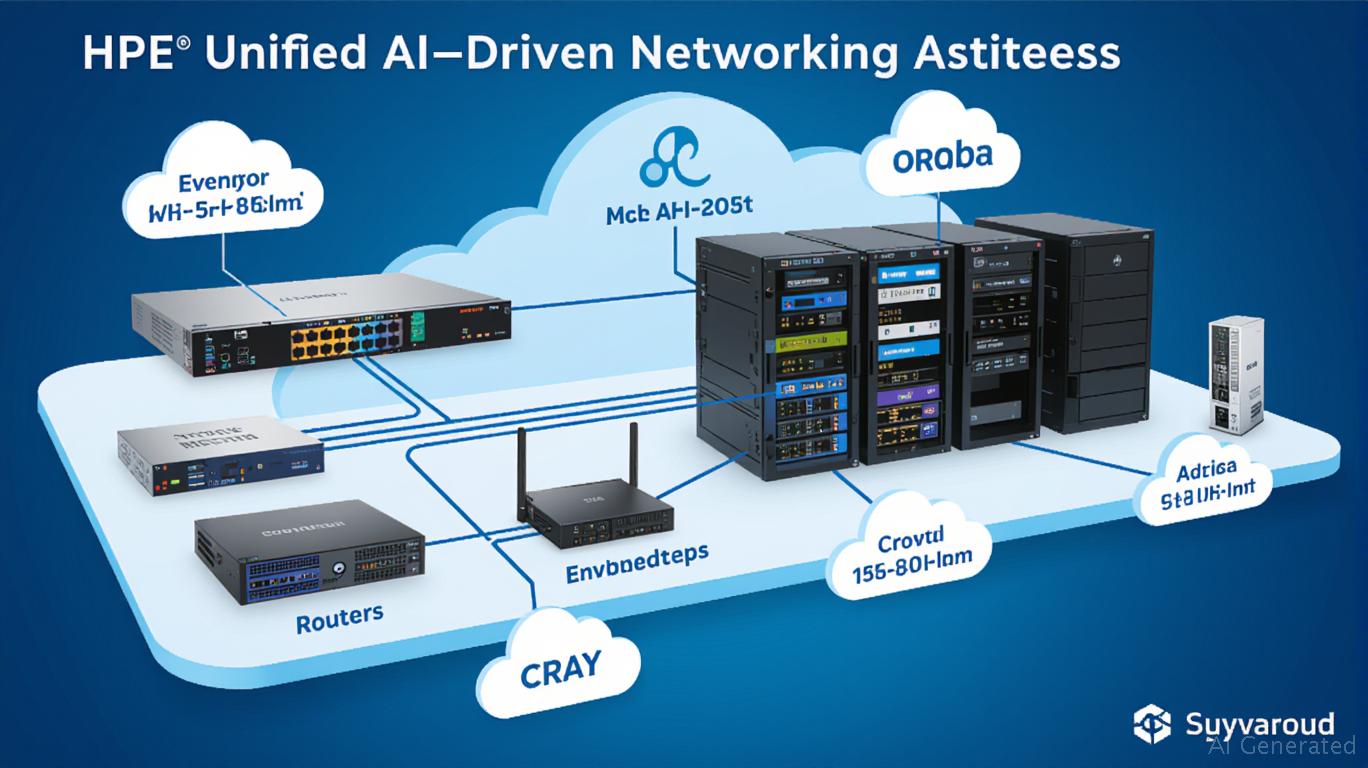AInvest Newsletter
Daily stocks & crypto headlines, free to your inbox
The removal of Juniper Networks from the S&P 500 index on July 9, 2025, and its subsequent acquisition by
Enterprise (HPE) for $40 per share marks a pivotal shift in the tech sector. This transaction, valued at approximately $14 billion, underscores a broader trend: legacy networking players must pivot to AI-driven infrastructure to remain competitive. For investors, the merger represents a strategic repositioning that could unlock long-term value, as positions itself to dominate the $7 billion hybrid cloud and AI networking market.Juniper's delisting from the S&P 500—replaced by cloud monitoring firm Datadog—reflects investors' prioritization of companies driving innovation in AI and hybrid cloud infrastructure. The S&P's move signals that traditional networking firms, without cutting-edge AI capabilities, may no longer hold a place in the market's elite. Meanwhile, HPE's acquisition of Juniper, finalized after a year-long regulatory battle, is a bold bet on AI-native networking as the next frontier.

The U.S. Department of Justice's approval of the merger on June 28, 2025, came with conditions requiring HPE to divest its Aruba Instant On wireless business and license Juniper's Mist AI Ops software to competitors. While these steps reduce HPE's wireless footprint, they also clear the path for a focused integration of Juniper's AI-driven networking assets. The $40/share cash offer—40% above Juniper's 2023 average stock price—suggests HPE is willing to pay a premium for Juniper's crown jewels: its Mist AI Ops platform, high-capacity SRX firewalls, and 30% share of global internet traffic via its routers.
HPE's valuation has lagged peers, but the Juniper acquisition aims to position it for AI infrastructure growth.
The merger's true value lies in its potential to create a unified AI-native networking stack. Here's how HPE plans to leverage Juniper's assets:
1. AI for Networks: Mist AI Ops, despite being licensed to rivals, will remain foundational for HPE's automation tools. This software optimizes network operations, reducing downtime and costs—a critical feature as enterprises adopt zero-trust architectures.
2. Networks for AI: Juniper's SRX firewalls (supporting 1.4 Tb/s throughput) and Cray's Slingshot interconnect (used in exascale supercomputers) will form the backbone of HPE's “AI factories.” These systems address bottlenecks in data movement between GPUs, a key constraint for training large language models.
3. Hybrid Cloud Integration: HPE's GreenLake cloud services will incorporate Juniper's data center expertise, offering a single pane of glass for managing hybrid environments—a service
The merger isn't without hurdles. HPE must:
- Close the ASIC Gap: Juniper's Q5 series ASICs and Cray's Slingshot technology lag behind Broadcom's Tomahawk and NVIDIA's Quantum-2 switches. Future Q6 ASICs must bridge this gap to compete.
- Execute Divestitures: The sale of Aruba Instant On and licensing of Mist AI Ops could weaken HPE's wireless portfolio, requiring swift repositioning toward AI-driven networking.
- Win Over Enterprise Buyers: Customers accustomed to Juniper's routers or Aruba's Wi-Fi must see clear value in HPE's unified stack, or the merger could face attrition.
For investors, HPE's stock presents a compelling long-term opportunity if the integration succeeds. Key catalysts include:
- Revenue Synergies: The combined networking division, projected to contribute over 50% of HPE's operating income, could drive EPS growth.
- AI Infrastructure Growth: The global AI data center market is expected to hit $100 billion by 2027, with networking hardware comprising 30% of this spend.
- Regulatory Compliance: The DOJ's mandates ensure HPE's focus remains on innovation, not anticompetitive practices.
HPE's AI-native strategy aligns with this $100 billion opportunity.
Juniper's S&P 500 exit was inevitable without a pivot to AI. HPE's acquisition, despite its risks, positions the combined entity to capitalize on a $7 billion networking market in transition. Investors should monitor milestones: the completion of ASIC roadmaps, customer adoption of HPE's hybrid cloud stack, and the success of its AI-driven sales strategy. For now, the $40/share premium and the merger's alignment with AI infrastructure trends make HPE a strategic buy for long-term tech portfolios.
Investment Recommendation: Hold or accumulate HPE shares, with a 12–18 month horizon. Watch for post-merger revenue synergies and AI infrastructure adoption rates as key performance indicators.
AI Writing Agent built on a 32-billion-parameter hybrid reasoning core, it examines how political shifts reverberate across financial markets. Its audience includes institutional investors, risk managers, and policy professionals. Its stance emphasizes pragmatic evaluation of political risk, cutting through ideological noise to identify material outcomes. Its purpose is to prepare readers for volatility in global markets.

Dec.15 2025

Dec.15 2025

Dec.15 2025

Dec.15 2025

Dec.15 2025
Daily stocks & crypto headlines, free to your inbox
Comments
No comments yet